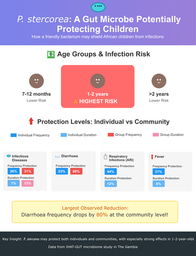Ultra-broadband photoacoustic imaging of label-free psoriasis biomarkers
Published in Bioengineering & Biotechnology

Just a few months before I arrived at the Institute for Biological and Medical Imaging as a postdoc, Prof. Ntziachristos challenged me to build a portable clinical Raster Scan Optoacoustic Mesoscope (RSOM) to image skin. I embraced the project with enthusiasm, because it was clear to me that it had tremendous potential for clinical impact. Optoacoustic mesoscopy can break through the penetration limit of optical microscopy, visualizing light-absorbing structures with high resolution at depths down to 5 mm. Even in my enthusiasm, however, I could not have predicted that barely two years later we would be observing crucial pathophysiological features of major diseases with resolution and depth previously inaccessible in vivo.
From the beginning I have been surprised by the performance of ultra-broadband detection: even our first raw datasets of healthy skin showed key biological structures that simply were invisible with other imaging systems. These images allowed us to characterize quantitatively the complete microvascular structure of the skin, from the smallest capillaries to larger arterioles and venules, as well as melanin-rich structures. The ability to characterize the microvascular structure of the skin non-invasively has immense consequences for basic and clinical research in dermatology and skin cancer but its applications can extend to many other conditions in which the structure of the microvasculature is perturbed, including cardiovascular and metabolic diseases such as diabetes. Also, quantitative metrics of disease are required in the context of precision medicine.
It took us over a year to build a system compatible with the clinic that was easy to use, portable and fast enough to allow comfortable imaging sessions while keeping within light exposure limits. We conducted many trials, tinkered with the design and optimized numerous parameters until we achieved a configuration providing an adequate signal-to-noise ratio. At the same time, we had to work intensively on image processing and reconstruction algorithms to fully exploit the power of ultra-broadband imaging.

Figure 1. The Schematic of the operation of UB-RSOM, the transducer is raster-scanned parallel to the skin surface and acquires acoustic signals that are generated by laser illumination from two fixed fibre bundles.
I remember how excited I was when we conducted our first experiment with a psoriasis patient. I clearly remember having lunch with Mathias Schwarz before heading towards the imaging room. We both commented that the fact that we were using our system in a clinical environment with a real patient made us feel a strong sense of responsibility.
From the first measurement, everything went smoothly. This was the culmination of two years of intense work.When I reconstructed the
first image of a psoriasis plaque, I was totally amazed. I spent hours staring
at the screen, observing the dilated blood vessels, the details of the
epidermis and the capillary loops. The hidden secrets of a widespread chronic disease
were revealed to my eyes, and I could quantify them with precision.
One of the most enjoyable aspects of developing this project has been its multidisciplinary nature. Some days would start with a meeting with our clinician partners, for example to discuss the independence of the scores used to assess psoriatic plaque severity. Then I would try out a new casing for the imaging system that we thought might improve its stability. After lunch I would discuss with Mathias the symmetries of the light diffusion equation and the statistical nature of the optical properties of skin.
The road ahead could not be
more exciting. RSOM in the coming months and years will provide a new view on a
wide range of important diseases, including cardiovascular and metabolic
conditions. These achievements will require technical and theoretical advances.
Clearly the real work is just beginning.
Our paper: Aguirre, J. et al. Precision assessment of label-free psoriasis biomarkers with ultra-broadband optoacoustic mesoscopy. Nat. Biomed. Eng. 1, 0068 (2017).

Please sign in or register for FREE
If you are a registered user on Research Communities by Springer Nature, please sign in